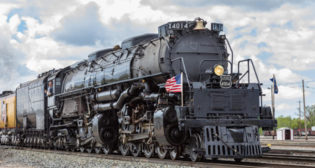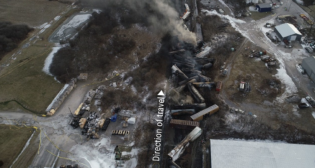
For Railcar Buyers, Time to Pull the Trigger, Soon
Written by Matt Elkott, Transportation OEM Analyst, TD Cowen
Photo courtesy TrinityRail
Takeaways from Cowen and Company’s recent Rail Equipment Webinar show that locomotive upgrades remain solid, as traffic growth continues. Elevated inquiries for newly built railcars should begin to translate into orders gradually, despite the steel premium. Lessors are well-positioned as freight demand rises, railcar supply decreases and new builds fall short of replacement levels this year.
Scrapping has increased so much that railcars are sitting in line at overwhelmed scrapyards, according to one of our panelists. This dynamic seems unlikely to ease any time soon. Meanwhile, rail traffic data released by the Class I’s show continued strong y/y growth in Week 19, ranging from 20% for Canadian Pacific to 44% for Kansas City Southern, with Union Pacific up 29%, CSX up 34%, and Norfolk Southern up 32%). Inquiries for newly built railcars continue to tick up, especially for intermodal flats, boxcars, steel gondolas and grain hoppers. A shortage in some of these car types cannot be ruled out in the coming quarters, according to the same panelist, who stressed that equipment is only one of several freight capacity concerns.

While some railcar buyers could continue to delay large manufacturing orders in the near term to avoid commodity-driven price premiums, our manufacturing panelist seemed to agree that the industry’s cars-in-storage population, down ~30% since mid-summer, is no longer sufficient to fully support rising demand. As such, we believe more buyers will have to begin pulling the trigger on larger orders. We are modeling for gradual increases in the balance of the year and into 2022.

Several trends are favoring railcar lessors:
- Underlying demand strength.
- Incremental scrapping revenue from higher steel prices.
- Below-replacement production this year, partly due to the steel premium and supply chain disruptions (we’re modeling for industry deliveries of 31,000 units in 2021, followed by 39,000 units in 2022).
These factors should more than offset the headwinds of higher equipment purchase costs and still tempered demand for tank cars, which make up roughly half of the fleet for some key operating lessors.
Renewable diesel and gasoline could represent emerging growth opportunities for rail in the coming years. This would be positive for the tank car fleet, which is yet to see a material demand recovery.
See our reports, Follow Up and Reaction to Our May 7 Railcar Industry Note, and Car Conundrum: Amid Rising Demand, Look Who’s “Steeling” the Show.



